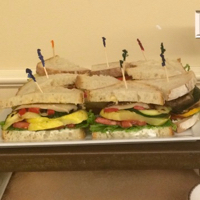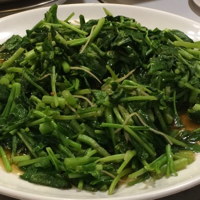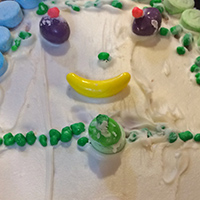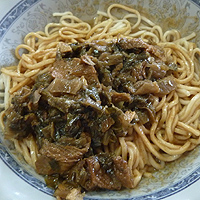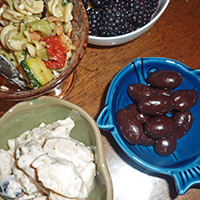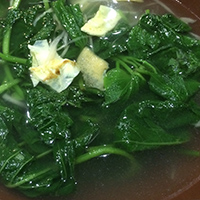OBJECTIVES By the end of this session you will be able to:
|
Tasks for this session
Before you come to class for our third class meeting:
Read
Read pages 43-69 in Building Powerful Community Organizations by Michael Jacoby Brown (2006) 1h 20 minutes.
Do the core beliefs exercise on page 44-45 (this will be used on discussion question 2-4). Do some of the other exercises and take some notes on this reading. (40 minutes)
Tasks
Activity One
In addition to our meeting on Zoom or in the classroom (if we meet that way), devote some more time to the discussion board, so that the total time you spent on Zoom and on the discussion board in Canvas is at least 3.5 hours in total.
Activity Two
I suggest you spend about 30 minutes making a list of the most influential persons you know or are in contact with. Also, think of the important or influential persons who are one person away from you (someone you know fairly well knows this important and influential person). Your second experiential learning assignment will involve your reaching out to three of the most influential and important persons you know, so think of who they are during this session.
Activity Three
I suggest you spend thirty minutes figuring out which group you want to join and get involved with this semester. You may need to do some online investigating to see if you can attend meetings or do some volunteering. You want to be able to become an active participant in the group, probably attending meetings or events and volunteering for about ten to fifteen hours over the semester so that you can get good information about what the group does. It is okay to get more involved in a group with which you are already associated.
Activity Four
I suggest you spend 45 minutes looking over the Grand Challenges. It is not too early to choose one of these to be a special focus of your thinking this semester, and an area of interest to explore in your academic paper. Discussion Board question 2-2 assumes you have spent about half-an-hour hour looking over the Grand Challenges.
Activity Five
This is something of a scavenger hunt. I want you to spend about 45 minute to an hour gathering images associated with political practice or community organizing. The easiest thing to do will be to find images associated with social movements. You may collect memes from social media to include in this project. After you have gathered a collection of such images (at least three; but no more than a dozen, I think, would be a good collection), I want you to study the images and answer the following questions for yourself:
1) Is this an attractive image or an image that is unattractive and exerts an influence through its unattractiveness, or is this an image where the aesthetics of the image are unimportant?
2) What is the response in a viewer that is intended?
3) What is the image telling us that isn't in the script? Or, if it a text-heavy image, what is the message that isn't literally in the script, but is implied by the text? At any rate, decode the messages in the image. What does it mean? What does it try to influence us to do or think?
4) Evaluate the effectiveness of the image. Is it likely to affect someone in ways that would satisfy the designers/artist?
Just spend about 90 minutes on this activity. Discussion Question 3-2 in the next session will ask you to share your collection of images and your analysis of them.
You can find collections of images related to social causes at the history of graphic design blog. You could also read the work of Casas and Williams on images in politics [pdf]. Shutterstock (a business that sells images) has blogs about images and social movements that are also worthy of your attention. If you are more interested in the serious art aspect of protest, and you still have a free view of articles at the New York Times (each browser you have gets three views per month before the paywall descends), you can read about the 25 Most Influential Works of American Protest Art since World War II.
Activity Six
Watch the film The Powerbroker: Whitney Young’s Fight for Civil Rights. This film is available through our library as an e-resource. I tried to watch it from library.uis.edu using Safari, Chrome, and Firefox, and it worked on two of those, but did not work on one of them. So, if you get an error when you lead the film, just try again with a different browser.
Activity Seven
Go to the United States Institute of Peace (USIP) Academy and register, so that you can take five free courses this semester. Take the Introduction to Peacebuilding Micro-Course, which will take about three hours.
Session Time Budget
3h 30m |
Class meeting on Zoom and Canvas Discussion Boards |
2h |
Reading Brown, pp. 43-69 |
30m |
Assignment related to 2nd experiential learning, create list of influentials |
30m |
Assignment related to 3rd experiential learning, pick a group |
30m |
Grand Challenges Paper, study topics and pick one. |
1h 30m |
Exercise in analysis of images and consideration of how imagery can influence people |
1h |
Watch The Powerbroker: Whitney Young’s Fight for Civil Rights |
| 3h | Take the USIP course on Peacebuilding |
Session Lecture About Assignments
There are several experiential learning assignments in this course, and I want you to get to work on them right away.
Remember to prepare the first experiential assignment, which is described in the course syllabus:
Hold a party or event or get-together including at least six households (at six persons with none of them residing in the same household would work) and yourself (you represent a seventh household). As many as three may be people you know, and at least three must be people you don't know very well. This can be a “block party” or some sort of an event with the intention of bringing together people in your street, your neighbors, your apartment building, etcetera. Maybe you could do this with people in your faith congregation, people with similar political beliefs, a group of social workers or persons in allied helping fields, or classmates at UIS. The point of the meeting is to get to know each other and strengthen bonds. The mission is to find a topic of common concern—an issue in your lives that is significant to all seven of you (you and the at least six others involved in your party or event). You must pay attention to how you reach out to the (at least) three persons whom you do not know very well, and how you successfully schedule and organize this event. You must pay attention to how the event was fun, built social bonds, and you must try to guide the event so that everyone who participated got to know each other a bit better. You need to be attentive to how you, at some point at the event, get the conversation directed toward an issue of common concern. Then, you need to keep track of what your six guests had to say about the issue of common concern. Write about this event in your learning notebook.
Since you are allowed to have as many as three of the six guests be persons you know pretty well, consider inviting along classmates from UIS.
This event should be completed by February 15th, but could be delayed up to the end of February. You should have written about it in your learning notebook by the start of Spring Break.
This first experiential learning assignment is supposed to help you in several ways. The two most important macro practice skills I want you to develop with the exercise are the skills of reaching out to people whom you don’t know very well, and the skill of having a conversation that has a purpose.
As you read Michael Jacoby Brown’s book in this session, you will see that an organizer needs to have many, many conversations with many, many people at the start of any organizing. The model that Brown is recommending requires you to go out and have conversations with about fifty persons, and listen to all of then. That is, you aren’t supposed to focus on your vision or your idea so much as this point; rather, you need to listen to what people tell you. And, it’s not enough to engage with a dozen persons, or two dozen persons. No, a good organizer will listen to scores of people, and make a point of listening to as many as possible.
For example, when organizing the faculty union at UIS, it was necessary to approach over 100 of the faculty before we could set up a core group and begin serious organizing efforts around the idea of forming an actual union. Only after we had spoken to fifty or sixty of our colleagues and we were sure that there was widespread support for organizing ourselves could we proceed, and only after we had listened to over 50% of the faculty and understood where they stood on the unionization question were we certain that a unionizing effort was likely to succeed.
For another example, when working in East Saint Louis with graduate students from our Urbana sister campus, we had to pair up students with local residents and visit 50-60 households where people would talk to us before we could really understand what needed to happen in any particular neighborhood (East Saint Louis has specific neighborhoods such as Lansdowne, Emerson Park, Alta Sita, Edgemont, Rush City, and so forth). It wasn’t enough to just talk to people who would come to their doors; we had to approach people of all ages who were hanging out on the street, socializing with friends in the parks or in vacant lots, or enjoying a Saturday fish fry in a churchyard. With a team of six students and six local residents, we could have six teams, and each team would try to talk to at least 8 (and ideally 12) residents.
Here are some things I think will surprise you if you ever do go door-to-door trying to talk to your neighbors. First, you will be shocked by how many are not home. It doesn’t matter when you go door-to-door, whether a weekend or weekday, whether you go in the early afternoon, late afternoon, or early evening, no matter when you go around trying to find people, at least a third won’t be at home. Maybe half won’t be at home. Secondly, you’ll be surprised by how many people will be friendly and talk to you. I think that in a typical neighborhood nearly half the people will be willing to listen to what you have to say, and then if you have explained who you are, why you are going around the neighborhood, and what you want to do (listen to them tell you about their ideas about how to make the neighborhood better and tell you what they personally need from their neighborhood and city), you’ll find about half of those who are at home will actually be glad to talk to you, and they will generally be friendly, and welcome your visit. Yes, in any given neighborhood, you can count the houses, and assume that about 20% to 25% of those non-vacant housing units will have someone inside who will tell you about life in the neighborhood and what should be done to make it better. This is certainly a much higher rate than you would get if you were trying to sell stuff, or if you were doing this on your own without bringing along someone from the neighborhood with you.
Going door-to-door takes a long time in a neighborhood. Many homes are vacant (in low-income urban areas, at least), and even among the homes and apartments that have residents, the residential turnover is extremely high. If you just go into a neighborhood two or three times a year, you’ll find maybe one-out-of-five of the households have different residents each time you come back.
I usually find it pretty easy to approach persons I don’t know, but not always. Sometimes it feels awkward or uncomfortable. I find it is much easier to approach persons I’m not familiar with if I am doing so because I’ve been assigned a task. For example, if I had a professor who told me to go out and meet someone and talk with them, it would be much easier. As a matter of fact, thinking back to my sabbatical in 2014, I did have one of my language instructors give me an assignment to go to a shop and ask questions about certain herbs and Chinese medicine, and although my conversational Chinese isn’t really fluent, I did feel emboldened to go out and meet the Chinese medicine herbalist and try to talk to him about his materials. So, I’m hoping this assignment does something like that for you, making it easier for you to go out and talk to people with whom you would otherwise probably not have any conversation. Ideally, you’ll gain from the experience a new comfort in talking to people whom you don’t know well. This may help you become a generally more outgoing person in public settings, perhaps you’ll develop the skill have having a short conversation with people in retail service you encounter as you do errands, or having a quick chat with people who stand together with you in line while you wait for something. This is a good habit to have in American culture, where talking to strangers is considered quite normal and friendly. Actually, America’s cultural traditions of quick familiarity and friendliness to strangers makes community organizing a bit easier here, while in other cultures were people are reserved and don’t have the norms that allow small talk with strangers a community organizer must make more effort to get introductions and follow up through social networks of initial contacts.
The other aspect of this experiential learning assignment is getting into the habit of having conversations with a purpose. Certain theories of human nature suggest that humans probably require about three hours of “social grooming” per day, or, in other words, we need to engage with conversation with friends and family members for about three hours per day. This estimate is based on the typical amounts of time primates spend grooming each other, which can be predicted by looking at average social group size and the ratio of the brain weight to total body weight. If we didn’t have language, according to those theories, we would need to spend many more hours each day with our peers, but since we do have language, we can chat with more than one person at at time, and this makes our social grooming more efficient. But, these sort of conversations humans need just to keep healthy are generally all about sharing information and giving emotional support. Those conversations don’t often have any obvious purpose, and their hidden (unconscious) purpose is to maintain bonds of trust, enjoy intimacy, support alliances and friendships, give and receive useful information, and make contributions or accept contributions in terms of getting or receiving praise, warnings, mood-elevating experiences like jokes and laughter, and so forth. Actually, if you think of it, almost all human speech has goals along these lines, and it is therefore possible to say that all human speech attempts to exert an influence on the listeners (not merely delivering messages in communication, but actually building trust and bonding or good feelings between the speaker and audience).
But, in macro practice, just as in micro practice, professional conversation with clients isn’t like normal human conversation. In therapeutic or clinical communication with clients, the social worker must turn off the normal habit of trying to use conversation to build affection and intimacy with the client, and must instead use communication for the single overriding purpose of helping the client reach clinical goals. A good therapist carefully controls their use of language so that every utterance is helping in some way work the conversation toward goals that are helpful to the client, with the therapist’s own needs and desires simply being left out entirely, except to the extent that those desires and needs involve helping the client in a professional way. In macro practice we also engage in professional communication where the goal is to help the client, but in community organizing or similar macro practice, the goal is merely to have conversations with a purpose. We aren’t usually getting into the intimate details that we need to know about in psychotherapy or micro-practice; and the relationship between the community organizer and people the community organizer meets In their work is more like normal human relationships. Still, with a community organizer, you do need to guide conversations toward defined goals. When a community organizer talks to, and listens to, someone, they are usually trying to do one of these nine things:
1) do an assessment of the community needs, generally accomplishing this partly by discovering the needs of an individual, but also by getting that individual’s perceptions of the community needs.
2) do an analysis of power and capacities in the community, generally trying to discover who has power to influence others or make changes, and which skills and abilities people have and are willing to use toward the work required in the community or organization
3) do an assessment of commitment and interest in the macro practice work, and discovering how much effort and time or resources a person might be willing to give to the group project
4) facilitating a thought process in which others come up with ideas and distinguish which ideas are best to follow
5) educating others about facts or helping transfer technical skills to others
6) trying to motivate others to become more committed to the ultimate vision or the steps that must be taken toward reaching the vision
7) gaining and sharing information that would be useful to the community or individuals who are working to improve the community
8) helping encourage and train others to take over the work of leadership in the group or community or organization so that the community organizer can gradually hand over all the work to local persons and new leaders
9) helping solve problems that bring disunity or estrangement, or helping to encourage group cohesion and affection and respect among group members
In your first individual experiential assignment, I think your conversation will mostly be a normal conversation in which you will be getting to know someone, but I think that in addition to this, your conversation will be one in which you are assessing community needs (finding out issues of common concern) and also doing an analysis of capacities (figuring out what the people you’re meeting might be able to do or willing to do) and trying to identify key figures (discovering whether the people you are meeting may have connections or individual resources that could be useful in addressing problems of common concern, and also getting their assessments of who might be best able to help). The conversation might move on to questions about what could be done, and if you get the conversation to that point, you’ll be gathering information about how people understand their common problems and you’ll also be practicing your skills at facilitating how people think through questions about what they could do to address a problem. To some degree, you might also be pushing a little, and trying to motivate people to get involved in addressing their collective problems. In normal conversation you might not do any of these things with intention or insight, but as a macro practice social worker, you should start to consciously consider all these tasks as things you might try to accomplish in apparently casual conversations in informal settings.
Discussion Board Questions (Activity One)
Go into Canvas, log in, and respond to the discussion questions for this session.
These are:
DQ 2-1: Check In
Check in for the second week of the semester. How are you doing your time management, so that you will have 10-12 hours each week for each of your 4-credit hour courses? How are you adjusting to the shift into study mode? Are you healthy? Are you okay? Any major good news to share with us?
DQ 2-2: Grand Challenges
This week you are supposed to spend about an hour becoming familiar with the Grand Challenges, and you are (hopefully) able to pick one of those Grand Challengs to be a focus for you this semester. Later in the semester, you are supposed to write a paper about how we (social workers) might help achieve some step on the way toward the goal of a particular grand challenge. Anyway, use this question to tell us which of the Grand Challenges is likely to be your focus this semester. Why are you interested in that Grand Challenge?
DQ 2-3: No permanent friends; no permanent enemies.
Michael Jacoby Brown recommends:
Don’t confuse or combine the person and the issue. Someone who disagrees with you on an issue is not an enemy. The disagreement is not personal. Don’t hold grudges. Someone who disagrees with you on one issue may be helpful on another. Don’t assume that people’s economic self-interest will automatically put them on one side of an issue. Follow what they do—not who you guess they are.
Can you think of an example, or describe an example, or make up a hypothetical example, of someone who confuses public and personal relationships, and allows conflict in the public life to cause emotional animosity in private life? Can you see this happening in America, and if so, what do you think contributes to this trend? Why do you think Brown is correct or incorrect in suggesting, “there is little understanding in our media or educational system about public life”?
DQ 2-4:
Share with the class your work on the exercise on pages 45-46 of Brown’s book.
Think of a group you belong to, or aspire to belong to, or just think of any group or class of people (if you can’t think of anything, just use “social work profession and social workers” as your group). Ideally, you belong to some group that is trying to make a difference in the world (some association or organization where you work or volunteer, or two which you give donations, or some club you belong to, for example).
Answer these questions:
1) What are some of the core beliefs I hold that apply to this group?
2) Where did I learn these beliefs?
3) Have I tested or reflected on the accuracy of these beliefs?
4) Can I test these beliefs now?
5) If I can test my core beliefs, how can I test them?
6) Am I willing to test my core beliefs?
7) How will these beliefs affect the group?
8) Do other members of the group also share these beliefs?
DQ 2-5: Listening to others
Brown suggests (pages 50-54) that there are three basic approaches to listening to others. You can have informal chats, with nothing written, but you come to the chat prepared with questions and ideas. You can have listening sessions after sharing your ideas by putting your ideas into writing (in one or two pages), and then sending those ideas to people, and then meeting with them to talk about your ideas. You can have focus groups.
The first experiential learning assignment in this course is essentially for you to do one of these three things (probably the first one, where the talk is more informal), as an exercise in listening carefully to others and doing so with people whom you don’t know well.
Which of these methods of listening would you feel most comfortable using to gather information and listen to others? Which do you think is probably most useful? Do you think you could run a focus group? Could you write a one-page (or two-page) summary of an idea and send it out to people, and then contact them to talk about your idea with them?
DQ 2-6:
Look over some of the guides to writing and the assignments in this class. One document is "Writing in SWK 433 Guide" and another is "How to write-Grand Challenges Paper" and another is "Examples of fairly good papers". Having reviewed these guides and having read the syllabus last week, what are your feelings about writing in this class? Are you going to try to write a little bit each week? What will you do to avoid putting off the write-ups and the experiential assignments until the end of the semester? That is, how will you discipline yourself and keep pace to work on these things starting now, so that you can get the work done evenly throughout the semester and even possibly finish early so that you can relax in the final weeks of the semester?
DQ 2-7: Whitney Young Jr.
In this session you have watched a documentary about the social worker Whitney Young Jr. and his fight for civil rights, where he played the role of a powerbroker.
Young seems to have used a strategy of an “inside game” where he cultivated relationships with people in power such as political and business leaders. He appealed to them with pragmatism and an empathy for their situation, and his suggestions for how they ought to take actions to help African-Americans were more likely to be accepted.
But, the film also showed harsh critics of Young and his methods of gently and humorously persuading power elites. Adam Clayton Powell, Jr. and Black Panthers showed dismissive opposition to Young and his approach. Young, for his part, suggested that the methods of the “Black Power Militant Radicals” was unlikely to win the sort of victories its practitioners were hoping to achieve.
This sets up a conflict between two approaches. Is it the case that one method is much more likely to succeed than the other? Do the two methods (militantly and radically demanding large changes versus gently or humorously pointing out self-interest and advantages of allowing some smaller change) necessarily conflict, or is this a false dichotomy? When both approaches are being used, do you think this enhances odds of success, or do either of these approaches give an excuse for inaction and lead to likely defeats?
Consider why you have the opinions and insights that you have about the “Young versus Powell” dynamic. What informs your opinion? What knowledge and what values?
DQ 2-8: Share some images.
One of the activities in the second session is to collect images related to social causes, movements, and protests. Share some of those images here, and let's discuss some of the images we find. What sort of images have an appeal to you? What are some memorable works of art related to social criticism or good causes? What sort of images are likely to inspire you or at least attract your attention? Do you have opinions about font faces and typography on posters? For example, some people do not like to see profanity on posters, some people prefer softer and rounder font faces while others want stronger and straighter font faces. Some people like simple colors or black-and-white to make a message starker, while others like lots of colors and "busy" visuals. What are your preferences when it comes to art that is supposed to inspire and motivate the audience?
DQ 2-9: Registering with the USIP
You should share your experience with registering for the USIP courses. How easy was it to register, and how quickly did you hear back from USIP? Were you able to find the first course, "Introduction to Peacebuilding (Micro)"? There may be some old links that do not work lurking in Canvas or the web page guides for class sessions, so hopefully if those are a barrier, you found your way to the right website and got enrolled and started your first course this semester.
In your journal you can document your completion of the courses with a paragraph or two about things you learned. Go ahead and share your paragraph(s) summary of of the course here in the discussion board, and then paste it into your learning journal right now, so that task will be done and you won't have to remember the course toward the end of the semester to write about it based on a memory of something you did months earlier.
Interesting Stuff To Explore
What are the most important issues in your community where macro practice could be useful?
it is worthwhile to consider the major problems in your community, and contemplate what is being done, and what could or ought to be done, to address those problems. Here are some of the problems that face Springfield.
Racism. While the Springfield police department doesn’t have (and doesn’t deserve) a notorious reputation like the police forces in Buffallo, NY (knocking a peaceful protester down), Saint Louis, MO (general incompetence), Los Angeles (brutality), or Chicago (torturing suspects), there are still many complaints about police treatment of minorities in Springfield, and Springfield is routinely ranked as one of the worst metropolitan areas in the country for minorities. What is going on in Springfield with Black Lives Matter, the Domincan Sisters and their SDART efforts?, The Springfield Race Unity Committee and their "Constructive Conversations on Race"? Is anyone training Springfield’s K-12 students in how to reduce their bias? Are people using evidence-based practices?
Our country is fragmented, with tens of millions of American seduced by a cult of delusional beliefs promoted by Fox, OAN, and Newsmax. To some extent many on the left are also out-of-touch, as discussed in “How Half of America Lost Its F**king Mind” essay in the October 12, 2016 Cracked. There are obnoxious radicals who break stuff and violence-prone rioters who discredit liberal and leftist demonstrations. Yes, most of the violence is done by right-wing fanatics and reactionaries, not by revolutionaries, and yet we still have divisions with otherwise sensible people convinced of false stories. What is being done to unity our community?
Many children fell far behind during the pandemic, and we have a sizeable number of students who are one or two years behind grade level. What is the community doing to mobilize volunteers to help supplement what the schools are doing with after-school enrichment and tutoring and mentoring?
Climate change poses a threat to civilization, as sea levels may rise, large areas may become agriculturally unproductive due to heat and drought and flooding, and some regions may become so torid in summer heat waves that people evacuate and migrate away to more moderate climates. What are we doing in Springfield to reduce our output of greenhouse gasses?
Many people are homeless, and shelter is a human right. The federal government’s response (low cost housing tax credit subsidies to property developers, housng choice vouchers, and public housing) are woefully inadequate. What are local agencies doing to end homelessness in Springfield?
Many people are hungry. What are we doing to fill in when SNAP benefits and National School Lunch as affiliated programs can't meet all the demand? Is the Central Illinois Food Bank in need of greater support? What about St. John's Breadline, or the Fifth Street Renassiance?
Historical Social Work:
In Introduction to Social Work and Social Welfare Policies and Services I make available a list of historical social workers and samples of their writing. Here it is again, in case you feel like being inspired:
Enjoy:
-
Thomas Chalmers (1780-1847) Ashton & Young wrote about Chalmers in their 2013 British Social Work in the Nineteenth Century
-
Octavia Hill (1838-1912) Homes of the London Poor (1883) shows her attitudes toward the poor and their housing conditions. You will find that popular charity guru Robert Lupton (Toxic Charity) sounds very much like Chalmers and Hill and Barnett in much of what he observes about charity and those who receive charity.
-
Samuel Augustus Barnett (1844-1913) Towards Social Reform (1909) Read to discover what the founder of the Settlement House movement had to say.
-
Mary McDowell (1854-1936) The University of Chicago Settlement is her description of what was going on in the settlement house around 1899/1900.
-
Stanton Coit (1857-1944) Neighbourhood Guilds: An Instrument of Social Reform (1892) was written in 1891, and describes the idea of Settlement Houses (called neighborhood guilds by Coit)
-
Florence Kelley (1859-1932) Child Labor & Womens Suffrage a speech she gave on July 22, 1905
-
Jane Addams (1860-1935) Twenty Years at Hull-House with Autobiographical Notes was published in 1912. Many of her other works are available online.
-
Mary Richmond (1861-1928) Social Diagnosis (published in 1917) is her most important work.
-
Edward T. Devine (1867-1948) Thh Essentials of a Relief Policy is an article Devine published in 1903 describing the advantages we might hope to achieve and the problems we should try to avoid in setting up a system of financial support for families.
-
Edith Abbott (1876-1957) She was quoted in this 1931 issue of Good Housekeeping,
-
Grace Abbott (1878-1939) The Delinquent Child and the Home was published in 1912.
-
Jeannette Rankin (1880-1973) This collection of oral interviews shares memories of her. An actual interview with her recorded shortly before she died.
-
Frances Perkins (1880-1965) Her book about Roosevelt is available online (free to look at it for one hour)
-
Clement Attlee (1883-1967) Here is the first chapter of his book: The Social Worker
-
Bertha Capen Reynolds (1885-1978) An Uncharted Journey by Bertha Reynolds (1963) This is a history of social work and a memoir written by one of the most significant leaders of radical social work. [if the link is broken, here is another pdf of the work]
-
Henry Lloyd Hopkins (1890-1946) gave this address on federal relief at a luncheon on September 19, 1936.
-
Dorothy Height (1912-2010) American Radio Works has put up a transcript of a speech Dorothy Height gave at the 1979 Scholarly Conference on Black Women. Her memoir Open Wide the Freedom Gates is available from Brookens Library (E185.97.H444 A3 2003), but you can also read it online if you are logged-in to the library.
-
Virginia Satir (1916-1988) Short excerpts from videos of her family therapy techniques can be seen online. The real treasure are the VHS videos of her lectures that have been digitized and shared online by the Virginia Satir Global Network. These are still gold; not much fundamental changes have taken place since these were recorded in the 1980s.
-
Whitney M. Young, Jr. (1921-1971) Transcripts of a long interview with him . His book To Be Equal is available in Brookens at E185.61 .Y73 1966. His book Beyond Racism; Building an open society is easily available through I-Share libraries.
-
Frances Fox Piven (1932 - ) She writes for periodicals such as The Nation and In These Times. Here is an interview with her from 2020 published in Jacobin.
-
Barbara Mikulski (1936 - ) Sen. Barbara Mikulski’s Most Colorful Moments is a piece from the Washington Post looking back over her career with many quotations from her and a video with some clips of her speaking.
Come to the next class ready.
Bring your answers for the three exercises you have done from Brown's book.
Come ready to discuss the your core beliefs related to a group.
Come with some familiarity of the Grand Challenges.
Come ready to discuss Whitney Young Jr., and his contribution to Civil Rights.











